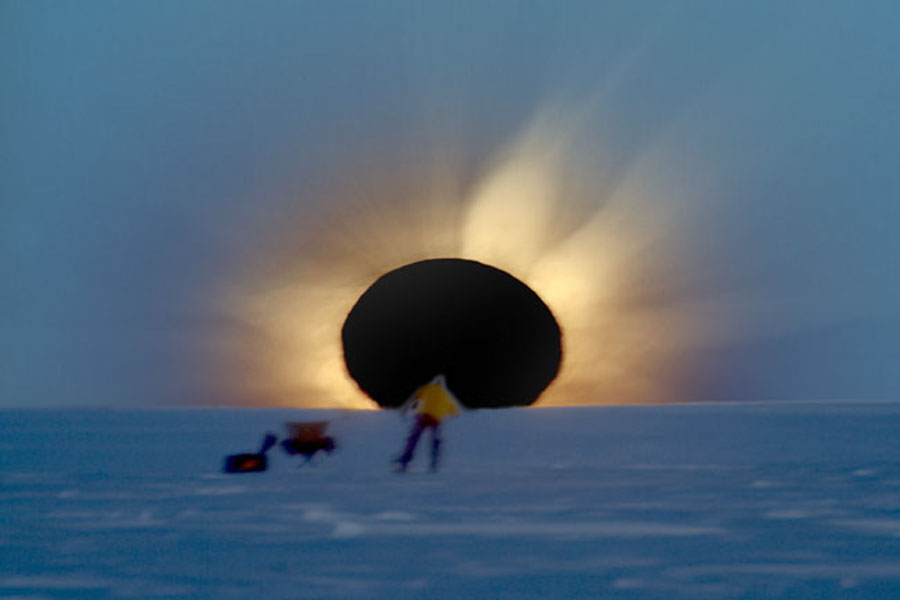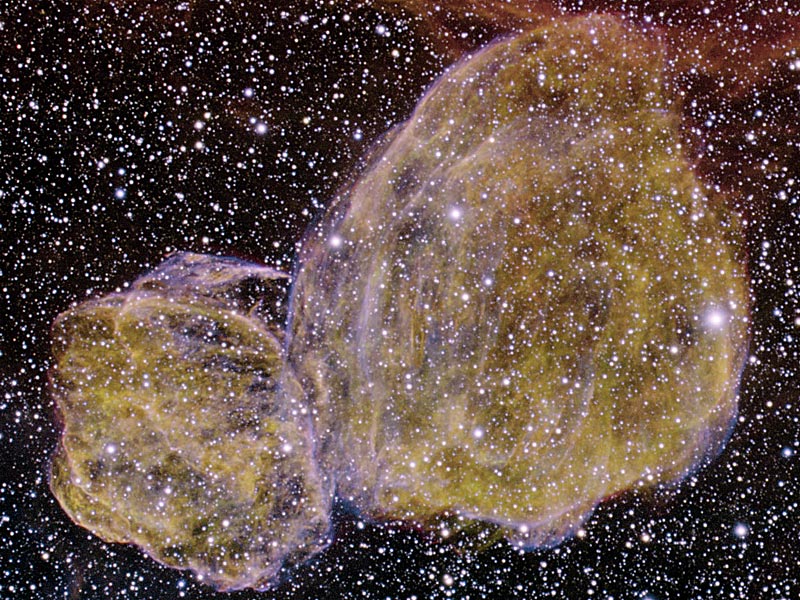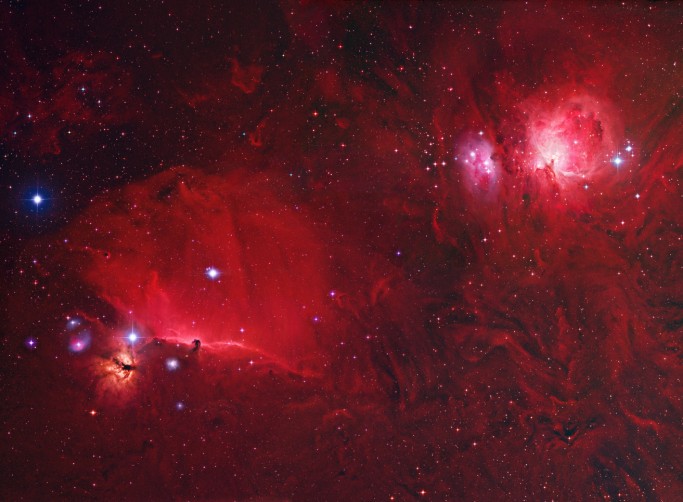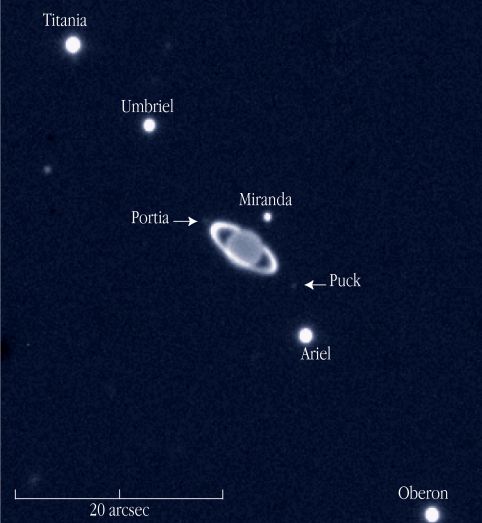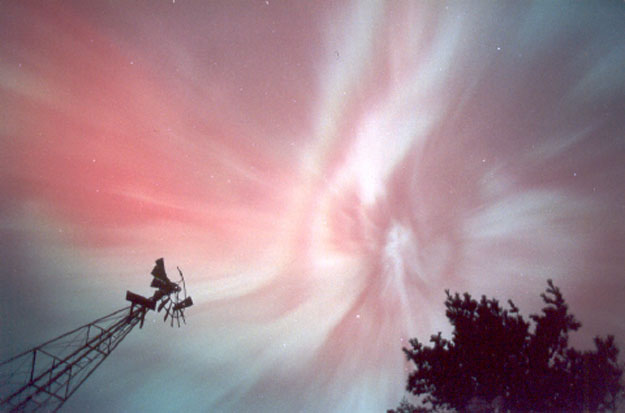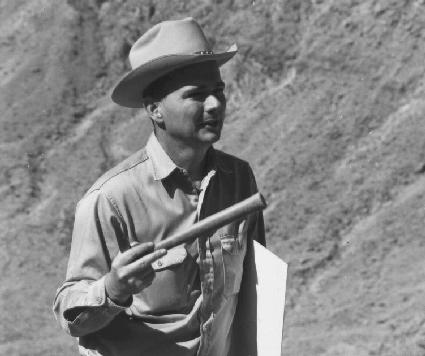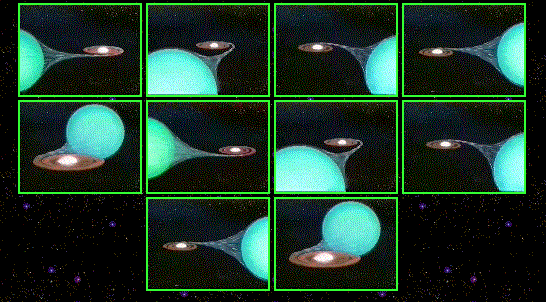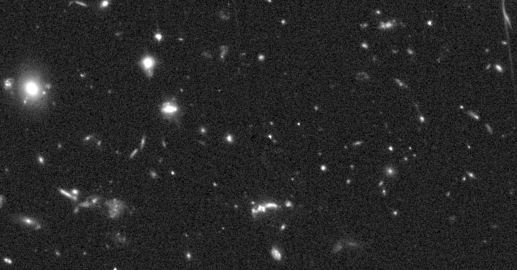| << Previous | Index | Next >> |
2015 Inner planets Venus and Mercury can never wander far from the Sun in Earth's sky. This week you've probably seen them both gathered near the western horizon just after sunset, a close conjunction of bright celestial beacons in the fading twilight. The pair are framed in this early evening skyview captured on January 13 from the ruins of Szarvasko Castle in northwestern Hungary. Above the silhouette of the landscape's prominent volcanic hill Venus is much the brighter, separated from Mercury by little more than the width of two Full Moons. On Friday, planet Earth's early morning risers will also be treated to a close conjunction, when Saturn meets an old crescent Moon near the southeastern horizon at dawn.
2014 Few cosmic vistas excite the imagination like the Orion Nebula, an immense stellar nursery some 1,500 light-years away. This stunning false-color view spans about 40 light-years across the region, constructed using infrared data from the Spitzer Space Telescope. Compared to its visual wavelength appearance, the brightest portion of the nebula is likewise centered on Orion's young, massive, hot stars, known as the Trapezium Cluster. But the infrared image also detects the nebula's many protostars, still in the process of formation, seen here in red hues. In fact, red spots along the dark dusty filament to the left of the bright cluster include the protostar cataloged as HOPS 68, recently found to have crystals of the silicate mineral olivine within its protostellar envelope.
2013
Click to play embedded YouTube video.
Video Credit: NASA/Goddard/SDO AIA Team
2012 Cosmic dust clouds ripple across this infrared portrait of our Milky Way's satellite galaxy, the Large Magellanic Cloud. In fact, the remarkable composite image from the Herschel Space Observatory and the Spitzer Space Telescope show that dust clouds fill this neighboring dwarf galaxy, much like dust along the plane of the Milky Way itself. The dust temperatures tend to trace star forming activity. Spitzer data in blue hues indicate warm dust heated by young stars. Herschel's instruments contributed the image data shown in red and green, revealing dust emission from cooler and intermediate regions where star formation is just beginning or has stopped. Dominated by dust emission, the Large Magellanic Cloud's infrared appearance is different from views in optical images. But this galaxy's well-known Tarantula Nebula still stands out, easily seen here as the brightest region to the left of center. A mere 160,000 light-years distant, the Large Cloud of Magellan is about 30,000 light-years across.
2011 Would you go to the end of the world to see a total eclipse of the Sun? If you did, would you be surprised to find someone else there already? In 2003, the Sun, the Moon, Antarctica, and two photographers all lined up in Antarctica during an unusual total solar eclipse. Even given the extreme location, a group of enthusiastic eclipse chasers ventured near the bottom of the world to experience the surreal momentary disappearance of the Sun behind the Moon. One of the treasures collected was the above picture -- a composite of four separate images digitally combined to realistically simulate how the adaptive human eye saw the eclipse. As the image was taken, both the Moon and the Sun peaked together over an Antarctic ridge. In the sudden darkness, the magnificent corona of the Sun became visible around the Moon. Quite by accident, another photographer was caught in one of the images checking his video camera. Visible to his left are an equipment bag and a collapsible chair.
2010 The stars of a summer night on the left and the winter night sky on the right are the same stars. In fact, both pictures were taken in late December and have similar fields of view. The left panel shows a scene from a beach on Bruny Island off the coast of Tasmania, Australia, while the right panel features the sky over the snowy Alborz Mountains of northern Iran. But if the sky on one side still looks unfamiliar to you, just put your cursor over the image to see an alternate version. The alternate image will trace the outlines of the familiar constellation of Orion, as seen from the southern and northern hemispheres of planet Earth.
2009 If every picture tells a story, this one might make a novel. The six month long exposure compresses the time from December 17, 2007 to June 21, 2008 into a single point of view. Dubbed a solargraph, the remarkable image was recorded with a simple pinhole camera made from a drink can lined with a piece of photographic paper. The Clifton Suspension Bridge over the Avon River Gorge in Bristol, UK emerges from the foreground, but rising and setting each day the Sun arcs overhead, tracing a glowing path through the sky. Cloud cover causes dark gaps in the daily Sun trails. In December, the Sun trails begin lower down and are short, corresponding to a time near the northern hemisphere's winter solstice date. They grow longer and climb higher in the sky as the June 21st summer solstice approaches.
2008 Are these two supernova shells related? To help find out, the 8-meter Gemini Telescope located high atop a mountain in Chile was pointed at the unusual, huge, double-lobed cloud dubbed DEM L316. The resulting image, shown above, yields tremendous detail. Inspection of the image as well as data taken by the orbiting Chandra X-Ray Observatory indicate how different the two supernova remnants are. In particular, the smaller shell appears to be the result of Type Ia supernova where a white dwarf exploded, while the larger shell appears to be the result of a Type II supernova where a massive normal star exploded. Since those two stellar types evolve on such different time scales, they likely did not form together and so are likely not physically associated. Considering also that no evidence exists that the shells are colliding, the two shells are now hypothesized to be superposed by chance. DEM L316 lies about 160,000 light years away in the neighboring Large Magellanic Cloud (LMC) galaxy, spans about 140 light-years across, and appears toward the southern constellation of the Swordfish (Dorado).
2007 This past weekend Comet McNaught peaked at a brightness that surpassed even Venus. Fascinated sky enthusiasts in the Earth's northern hemisphere were treated to an instantly visible comet head and a faint elongated tail near sunrise and sunset. Recent brightness estimates had Comet McNaught brighter than magnitude -5 (minus five) over this past weekend, making it the brightest comet since Comet Ikeya-Seki in 1965, which was recorded at -7 (minus seven). The Great Comet of 2007 reached its brightest as it rounded the Sun well inside the orbit of Mercury. Over the next week Comet McNaught will begin to fade as it moves south and away from the Sun. The unexpectedly bright comet should remain visible to observers in the southern hemisphere with unaided eyes for the rest of January. The above image, vertically compressed, was taken at sunset last Friday from mountains above Catalonia, Spain.
2006 Why does the Sombrero Galaxy look like a hat? Reasons include the Sombrero's unusually large and extended central bulge of stars, and dark prominent dust lanes that appear in a disk that we see nearly edge-on. Billions of old stars cause the diffuse glow of the extended central bulge. Close inspection of the bulge in the above photograph shows many points of light that are actually globular clusters. M104's spectacular dust rings harbor many younger and brighter stars, and show intricate details astronomers don't yet fully understand. The very center of the Sombrero glows across the electromagnetic spectrum, and is thought to house a large black hole. Fifty million-year-old light from the Sombrero Galaxy can be seen with a small telescope towards the constellation of Virgo.
2005
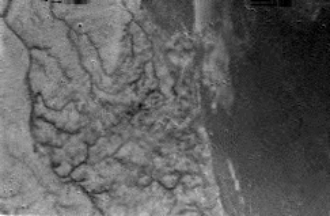
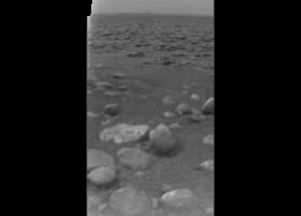
Credit: ESA, NASA, Descent Imager/Spectral Radiometer Team (LPL)
2004 Adrift 1,500 light-years away in one of the night sky's most recognizable constellations, the glowing Orion Nebula and the dark Horsehead Nebula are contrasting cosmic vistas. They both appear in this stunning composite digital image assembled from over 20 hours of data that includes exposures filtered to record emission from hydrogen atoms. The view reveals extensive nebulosities associated with the giant Orion Molecular Cloud complex, itself hundreds of light-years across. The magnificent emission region, the Orion Nebula (aka M42), lies at the upper right of the picture. Immediately to its left are a cluster of of prominent bluish reflection nebulae sometimes called the Running Man. The Horsehead nebula appears as a dark cloud, a small silhouette notched against the long red glow at the lower left. Alnitak is the easternmost star in Orion's belt and is seen as the brightest star to the left of the Horsehead. Below Alnitak is the Flame Nebula, with clouds of bright emission and dramatic dark dust lanes. Fainter tendrils of glowing hydrogen gas are easily traced throughout the region in this Orion deep field.
2003 Yes it does look like Saturn, but Saturn is only one of four giant ringed planets in our Solar System. And while Saturn has the brightest rings, this system of rings and moons actually belongs to planet Uranus, imaged here in near-infrared light by the Antu telescope at the ESO Paranal Observatory in Chile. Since gas giant Uranus' methane-laced atmosphere absorbs sunlight at near-infrared wavelengths the planet appears substantially darkened, improving the contrast between the otherwise relatively bright planet and the normally faint rings. In fact, the narrow Uranian rings are all but impossible to see in visible light with earthbound telescopes and were discovered only in 1977 as careful astronomers noticed the then unknown rings blocking light from background stars. The rings are thought to be younger than 100 million years and may be formed of debris from the collision of a small moon with a passing comet or asteroid-like object. With moons named for characters in Shakespeare's plays, the distant ringed world Uranus was last visited in 1986 by the Voyager 2 spacecraft.
2002 Few auroras show this level of detail. This unusual display of an auroral corona occurred on Earth three days after an unusual solar event -- the fifth most powerful explosion yet recorded on the Sun. An X14-class solar flare on April 15 sent a tremendous Coronal Mass Ejection (CME) into the Solar System. This CME did not directly impact the Earth. The Solar-System wide shock wave it created probably did, however, causing a G3-class geomagnetic storm and a night filled with colorful auroras across much of northern North America. The unusual red color of this Michigan aurora is caused by solar ions striking oxygen molecules 300 kilometers high in Earth's atmosphere. More typical green auroras are caused by oxygen recombining only 100 kilometers high.
2001 Our Galaxy is filled with gas. Most of this gas is hydrogen, some is helium, but there is a trace amount of relatively heavy molecules, including carbon monoxide (CO) - a component of smog. The above wide-angle radio CO image shows the incredibly diverse structures that the molecular interstellar medium forms. Dense clouds show where stars may be forming and open voids may indicate the action of strong winds from massive, recently formed stars. This FCRAO Outer Galaxy Survey was recently re-processed at the Dominion Radio Astrophysical Observatory for inclusion in the Canadian Galactic Plane Survey, an international effort to map all constituents of the interstellar medium over large scales at high angular resolution.
2000 Sunrise seen from low Earth orbit can be very dramatic indeed (and the authors don't apologize to Hemingway for using his title!). In this breathtaking view from the space shuttle Endeavor, the Sun is just visible peaking over towering anvil-shaped storm clouds. The silhouetted cloud tops mark the upper boundary of the troposphere, the lowest layer of planet Earth's atmosphere. Sunlight filtering through suspended dust causes this dense layer of air to appear red. In contrast, the blue stripe marks the stratosphere, the tenuous upper atmosphere, which preferentially scatters blue light.
1999 The Orion Nebula and its surroundings present skygazers with a wondrous jumble of newborn stars, gas, and dust. Emission nebulae - glowing energized clouds of gas, and reflection nebulae - dust clouds shining by reflected starlight, abound at this photogenic cosmic location a mere 1,500 light-years or so away. This telescopic image reveals an intriguing nebulosity which seems to consist of dust clouds illuminated not by starlight but by the light of the Orion Nebula itself. In non-telescopic views, the bright group of stars near the top appear as the northernmost star in Orion's sword. They are seen here illuminating the nearby dust clouds. Yet the yellowish streamers of dust across the middle reflect the light of the Orion Nebula, which lies just off the bottom edge of the photo.
1998 Eugene Shoemaker's passion was Astrogeology. He dreamed of going to the Moon. Credited with inventing the branch of Astrogeology within the U.S. Geological Survey, his contributions to the field and the study of impact craters, lunar science, asteroids, and comets are legendary. Though his own career as an astronaut/geologist was sidelined by a health problem, he helped train the Apollo astronauts in geology and the investigation of the lunar surface. Seen here at Meteor Crater, Arizona in the mid 1960s, Shoemaker was killed in a tragic car accident in July 1997. He is survived by his wife and professional colleague, Carolyn, and children. In a fitting tribute conceived by a former student, Eugene Shoemaker's ashes were placed on-board the Lunar Prospector spacecraft which has now successfully reached a polar mapping orbit around the Moon. After completing its scientific mission, the spacecraft will ultimately impact the lunar surface.
1997 What does a black hole look like? If alone, a black hole would indeed appear quite black, but many black hole candidates are part of binary star systems. So how does a black hole binary system look different from a neutron star binary system? The above drawings indicate it is difficult to tell! Recent theoretical work, however, has provided a new way to tell them apart: advective accretion flows (ADAFs). A black hole system so equipped would appear much darker than a similar neutron star system. The difference is caused by the hot gas from the ADAF disk falling through the event horizon of the black hole and disappearing - gas that would have emitted much light were the central object only a neutron star. Recent observations of the soft X-ray transient V404 Cyg has yielded a spectrum much like an ADAF onto a black hole - and perhaps brighter than allowable from an ADAF onto a neutron star.
1996 What did the universe look like near the beginning? This exciting photo by the Hubble Space Telescope is one of the deepest ever taken, and shows galaxies as far away as ever before photographed. The universe back then - when only one third of its present age - was a strange and violent place. Back then a large fraction of galaxies were colliding and interacting. In fact, the shapes of many galaxies in the above photo are more distorted than most nearby galaxies. At this early universe epoch many clusters of galaxies were just forming. The bright twisted group of galaxies below the photographs center contains the energetic radio galaxy 3C324.
| << Previous | Index | Next >> |



